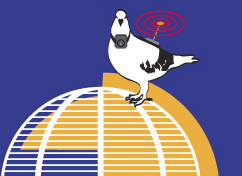Joline Blais
Visitor
|
Wabanaki Project - 2006/05/17 10:02
In the Presence of the Sacred
Grounded stories, indigenous networks, and webs of trust help us maintain our ties to the living world and each other while making sense of global phenomena. They can also provide opportunities to respond to global threats to survival. A 1977 Iroquois address to the UN warned the audience about the increasing destruction of the global ecosystem by technological progress. The Iroquois reminded their audience that “Native People can contribute to the survival potential of the human species" because they still know how to live in harmony with the natural world. The Tanami Network provides one forum in which indigenous voices like theirs can be heard. But indigenous Peoples also need other “alliances with the other people of the world to assist in [their] struggle to regain and maintain ancestral lands and to protect the Way of Life [they] follow."
In the Presence of the Sacred addresses this need by combining grounded stories, indigenous networks, and webs of trust . In the tradition of what Cherokee/Appalachian poet Marilou Awiakta calls “art for Life’s sake, as opposed to art for Art’s sake,” In the Presence of the Sacred builds cultural alliances between Wabanaki and local storytellers, by following an indigenous tradition of talking circles and storybraids.
The connections between braiding, sweetgrass, story and land were profound and complex. The Passamaquoddy word “latokonikon” signifies "braid" (as in hair or sweetgrass), from their tradition of telling stories as they braid the ceremonial sweetgrass. Kehsatokot, meaning “something string-like, story” according to the Maliseet-Passamaquoddy Dictionary, is used for both length of sweetgrass and length of story. In response to both the deep cultural meanings of braiding, its use in ceremonies of healing and purification, and the local threat to sweetgrass, "braiding” became the model for both the technique of storytelling, and the content of the stories for In the Presence of the Sacred .
All storybraids are accompanied by a long braid of sweetgrass brought to us by Mi’kmaq Clan mother, Miiigam’agan. Carol Dana, another member and Penobscot language researcher and Dartmouth fellow, brought us Mary Ritchie’s words about sweetgrass:
“Sweetgrass is the hair of our Mother;
separately, each strand is not as strong
as the strands are when braided together.”
Carol’s work on a Sweetgrass CD/book, and her understanding of the culture embedded in the Penobscot language, has guided the early storybraiding work. Under the guidance of these elders, we braid stories in an attempt to understand the significance of sweetgrass to the Land and People of this region.
Structurally, a story-braid is a live interweaving of stories in which each storyteller adds her strand, but in a way that respects and honors the other strands. In a storybraiding session, an interactively produced story emerges that becomes greater than the sum of its strands. For example in a recent storybraiding session, one member’s dream, a tribal prophecy told by another member’s grandfather, and a response to Catholic education were all woven into a story about the role of indigenous women under the sexist world-view of the Catholic Church, and alternatives to that story.
Besides the ceremonial presence of the literal and figurative sweetgrass, storybraiding incorporates two other rituals that have emerged from members. First, sessions begin with a prayer around an altar made up of the four elements from the local enviroment—earth air, fire, water. Second, that prayer, as well as key words in the storybraiding, are spoken in a Wabanaki language. Members of the storybraid speak three related Wabanaki languages—Mi’kmaq, Penobscot, and Passamaquoddy—and sessions often explore the connections among root words and concepts that link the languages and distinguish their worldview from English. During an early session, for example, Miigam’agan greeted my 5-year old daughter in Mi”kmaq with words that mean “hello grandmother”. This acknowledgement of the presence of the ancestors in a child, and a reverence for both child and ancestor are difficult to convey with English words and concepts but quite natural in Mi’kmaq.
In the Presence of the Sacred begins with local grounded stories, but we plan to network these local stories with stories from other communities creating an indigenous network. Building on the model of the Tanami Network , and on the existence of hi-bandwidth technology in indigenous communities around the world, from the Australian outback to Pueblos in Southwestern US, In the Presence of the Sacred would “braid” these separate stories nodes together—not into a single hierarchical braid, but into many related, or networked braids, each relevant to the members who collaborate on the construction of each braid.
|
